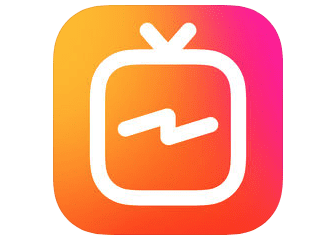The recent news about the launch of IGTV, Instagram’s new long-form video feature, is certainly one of the biggest social media announcements of the year. But exactly what it means, and how important it might be, depends entirely on the angle you look at it from.

Here are four ways to interpret and understand what IGTV might mean for the different players within the influencer space…
Influencers:
Right now, on the heels of the announcement, IGTV is most exciting and interesting for influencers themselves. YouTube has had significant issues with influencers over the last 12 months, from recent controversies with Logan Paul and Alfie Deyes to policies around monetization and the launch of YouTube Premium, causing the once darlings of the influencer world to come under sustained attack.
There’s no doubt that the launch of IGTV has, in part, been designed to start wooing influencer talent away from YouTube altogether and, the truth is, it will work. But in an increasingly crowded space, there should be plenty of influencers to go around; unless further developments or scandals turn what will likely be a trickle, into a full-blown exodus.
Industry:
Facebook and Google have been engaged in a battle for internet supremacy for a long time. Together, they account for 84 percent of the global online advertising market; but that hasn’t stopped them from taking shots at each other. The announcement of IGTV is a fresh charge in the “video war,” but it’s also more than that. In the last twelve months, Facebook has made a number of moves into the influencer space, with its Branded Content Tool and a new, yet to be released, influencer platform that includes search functionality.
For a long time, YouTube has been home to the power influencer; it’s where influencers like Zoella and PewDiePie built what are now their own media empires. But Facebook seems to be completely committed to stealing that crown by the end of the decade.
Agencies:
For marketing, advertising and communications agencies, IGTV opens up an entirely new executional format for influencer relations, which is welcome news for an already booming service. Right now, long-form video content (over 5 minutes) is something that is really best suited to YouTube, or potentially, Facebook Live. IGTV, with its hour-long video limits and access to influencer audiences, is a serious game changer.
The real test of its value, however, will come down to whether influencers themselves are open to and interested in creating content for the platform, and whether users themselves will be open to consuming and engaging with that content.
Brands:
The big questions for brands are similar to those of agencies, although brands will have more keen interest in whether adoption and viewership is across the board or “lumpy.”
If it’s the latter, IGTV may only be effective with very particular types of influencers, with very particular audiences. This could make it, at best, poor value for money and, at worst, completely inappropriate for the majority of brands to even consider as a comms channel. This “thinness” of the product is the very thing that negatively impacted Snapchat in terms of brand adoption for a number of years. And as its popularity continues to wain (and with IGTV itself looking ominously like another potential nail for its coffin), IGTV will need to be wary to not fall into the same trap.


